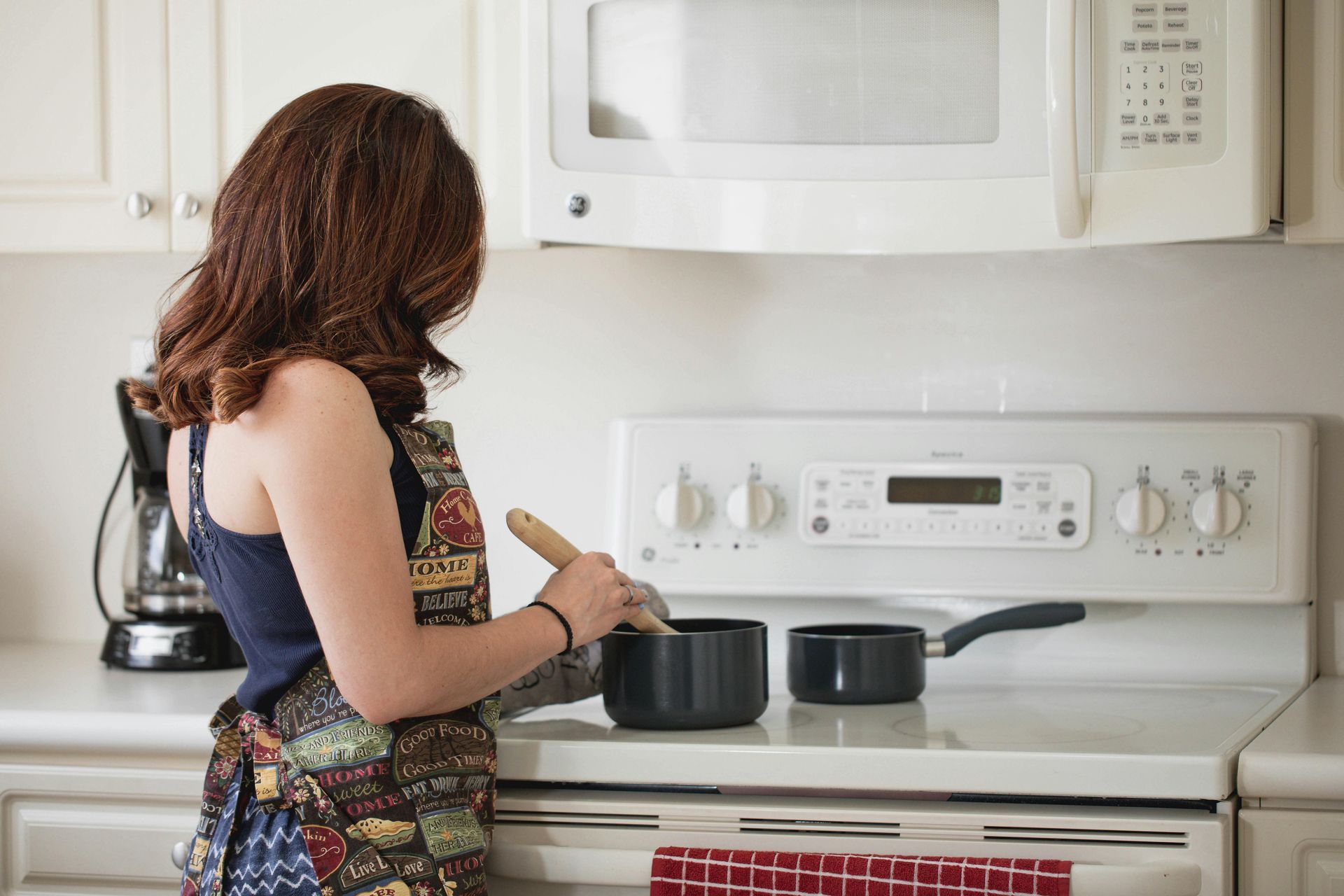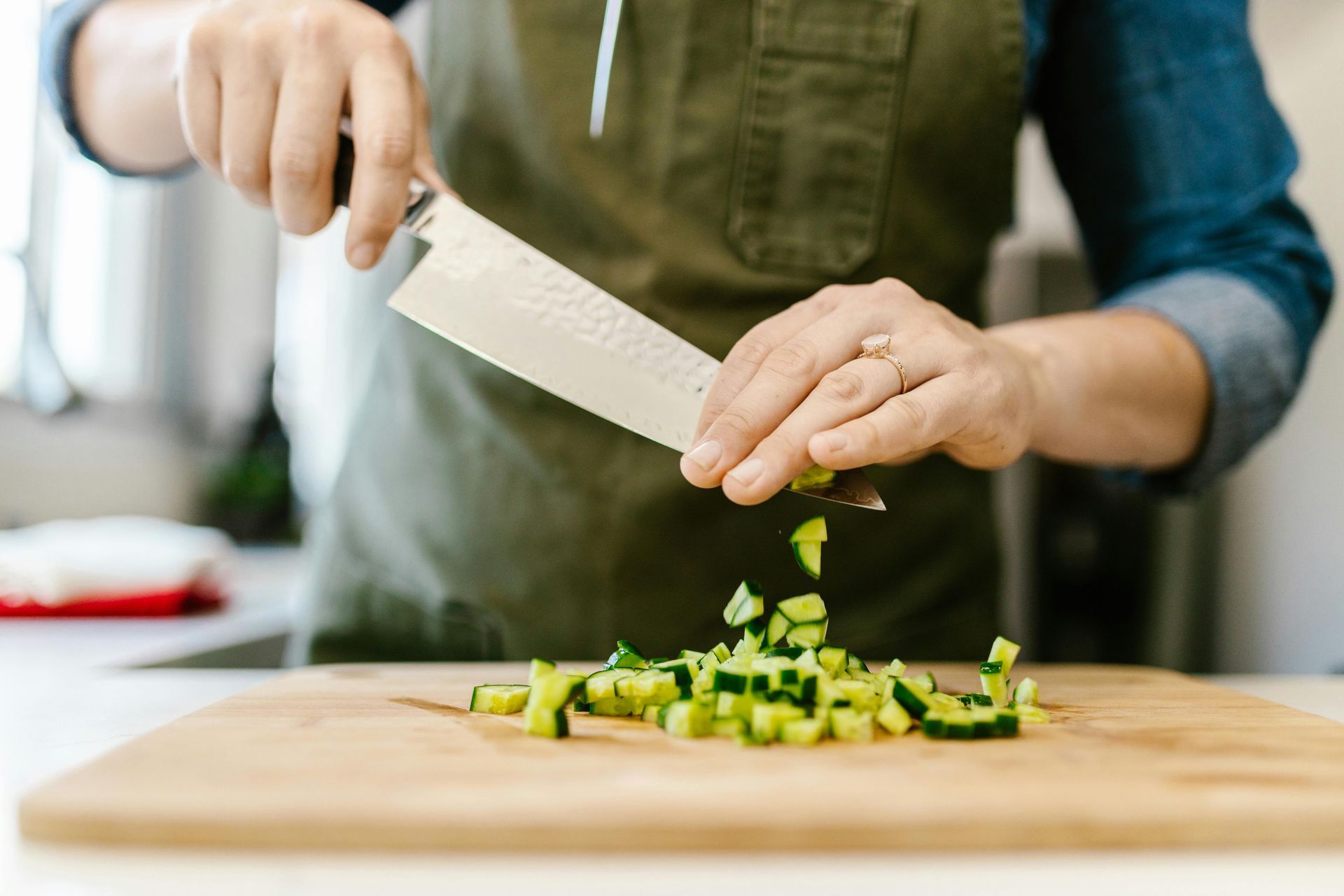Mastering Knife Skills
Knife skills are essential for efficient and safe cooking. Start by choosing the right knife for the task, such as a chef's knife for chopping vegetables, a paring knife for more delicate tasks, or a serrated knife for slicing bread. A well-maintained, sharp knife is crucial for precision and safety. Dull knives require more force, increasing the risk of slips and accidents.
Grip the knife firmly with your dominant hand, wrapping your fingers around the handle and placing your thumb against the side of the blade for stability. Use your other hand to hold the ingredient with a claw-like grip, tucking your fingers to avoid accidental cuts. This technique ensures that your knuckles guide the knife, providing a safer and more controlled cutting motion.
Practice basic slicing, dicing, and chopping techniques to improve your speed and precision. For slicing, use a smooth, back-and-forth motion, letting the knife do the work. For dicing, first cut the ingredient into even slices, then into strips, and finally into cubes. Chopping involves a quick, downward motion, often used for herbs or smaller vegetables.
With time and practice, you'll notice a significant improvement in your kitchen efficiency and safety. Consistent practice will also make meal preparation more enjoyable and less time-consuming. Consider taking a cooking class or watching tutorial videos to further enhance your skills. Mastering knife skills is a fundamental step towards becoming a confident and proficient home cook.


